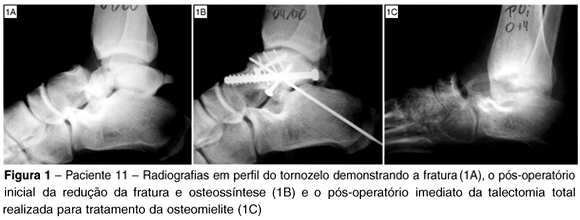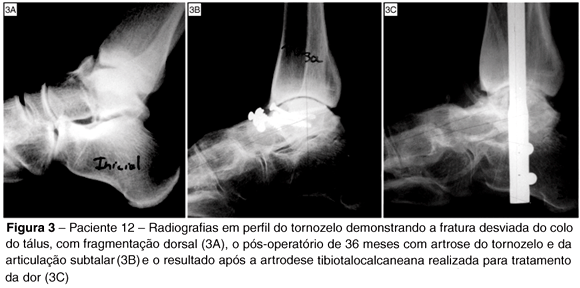OBJETIVE: To evaluate the clinical, functional and radiographic outcomes of talar neck fractures in patients treated at the Foot and Ankle Surgery Group of the Santa Casa de São Paulo. METHOD: 20 patients were evaluated. Mean follow-up time was 71 months. One fracture was classified as Hawkins Type I, 12 as Hawkins type II, five as Hawkins type III, two as Hawkins type IV, and four fractures were open. RESULTS: One patient was treated conservatively, 16 were treated with ORIF (three with primary subtalar arthrodesis), one treated with talectomy and two with tibiotalocalcaneal arthrodesis. The reduction was anatomical in seven feet, acceptable in six feet and poor in four. Seven patients had early complications. There was one delay of consolidation and four talar body osteonecrosis. No signs or minimal signs of radiographic arthritis of the affected ankles were found in 62% of the patients and 25% of affected subtalar joints. Of the 16 patients who did not require secondary procedures, 81% complained about the treated foot, 37.5% showed some deformity, 44% had decreased skin sensitivity and 50% never returned to work. The mean loss of motion in the ankle was 49%, and in the subtalar joint, 80%. The average AOFAS score was 73 points. CONCLUSION: Talar neck fractures are associated with high rates of clinical, functional and radiographic complications.
Talus; Fractures, bone; Adult








